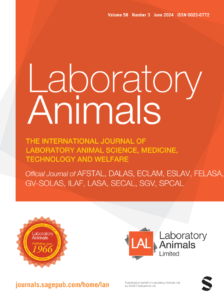Stephane Tanguy1, Agathe Cambier2, Leandro Fontana-Pires1,2, Timothe Flenet2, Charles Eynard2, Julie Fontecave-Jalon1, Pierre-Yves Gumery1 and François Boucher1
1 Universite Grenoble Alpes, CNRS, UMR 5525, VetAgro Sup, Grenoble INP, T IMC, 38000 Grenoble, France
2 Etisense SAS, Lyon, France
Abstract
The development of alternative methods for monitoring cardiorespiratory function without restraint or sur
gical implantation is attracting growing interest for both ethical and scientific reasons. For this purpose, a
new non-invasive jacketed telemetry tool consisting in a radio device maintained in a jacket worn by the
animal was previously developed to improve cardiorespiratory monitoring. It allows simultaneous monitoring
of cardiac activity by surface electrocardiagram, respiratory function by respiratory inductive plethysmogra
phy, and locomotor activity by accelerometry. However, this tool has only been validated under conditions of
low/intermediate activity levels or in anesthetized animals. This study aimed to evaluate the feasibility of
using this system in the challenging conditions of an exertion protocol. Male Wistar rats (n¼10, 8–9 weeks
old) were subjected to an incremental treadmill exercise protocol including speed levels from 5 to 40cms 1
separated by 30-s breaks. Heart rate (HR) and minute ventilation (assessed by minute volume; MV) were
continuously monitored. At the end of each running level and during the 30-s breaks, HR and MV showed a
significant increase compared to resting values. They returned to the baseline within 60 min of post-exercise
recovery. Overall, our results demonstrated (i) the ability of the animal to run while wearing the device and (ii)
the ability of the device to reliably monitor cardiorespiratory adaptation to treadmill exercise despite signif
icant mechanical disturbances. In conclusion, this study highlights the possibility of non-invasively monitor
ing cardiorespiratory functional variables that were previously unattainable under conditions of high activity
in freely moving animals.
gical implantation is attracting growing interest for both ethical and scientific reasons. For this purpose, a
new non-invasive jacketed telemetry tool consisting in a radio device maintained in a jacket worn by the
animal was previously developed to improve cardiorespiratory monitoring. It allows simultaneous monitoring
of cardiac activity by surface electrocardiagram, respiratory function by respiratory inductive plethysmogra
phy, and locomotor activity by accelerometry. However, this tool has only been validated under conditions of
low/intermediate activity levels or in anesthetized animals. This study aimed to evaluate the feasibility of
using this system in the challenging conditions of an exertion protocol. Male Wistar rats (n¼10, 8–9 weeks
old) were subjected to an incremental treadmill exercise protocol including speed levels from 5 to 40cms 1
separated by 30-s breaks. Heart rate (HR) and minute ventilation (assessed by minute volume; MV) were
continuously monitored. At the end of each running level and during the 30-s breaks, HR and MV showed a
significant increase compared to resting values. They returned to the baseline within 60 min of post-exercise
recovery. Overall, our results demonstrated (i) the ability of the animal to run while wearing the device and (ii)
the ability of the device to reliably monitor cardiorespiratory adaptation to treadmill exercise despite signif
icant mechanical disturbances. In conclusion, this study highlights the possibility of non-invasively monitor
ing cardiorespiratory functional variables that were previously unattainable under conditions of high activity
in freely moving animals.

